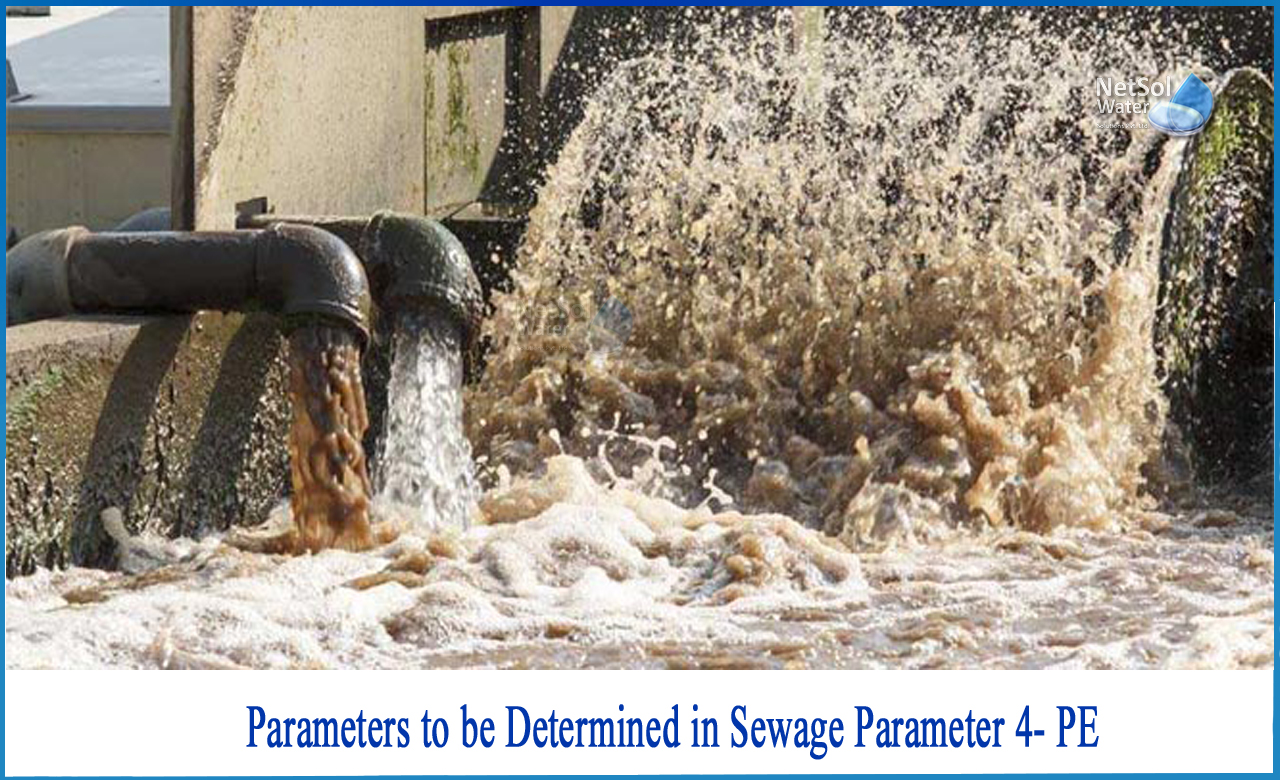Overview
The degree of water pollution is determined using sewage parameters. Water pollution is defined as any change in the physical, chemical, or biological qualities of water, resulting in wastewater. These waters must be cleansed after usage to prevent pollution of lakes, aquifers, rivers, and seas, which are mainly the result of human activity. These pollutants are all chemicals or unwanted items that pollute the air, soil, and water.
Thousands of workers undertake sewage parameter studies every day at all sewage treatment plants. These are pollution indicators that are used to ensure that wastewater complies with local regulations.
What are Parameters to be determined in sewage Population equivalent?
A metric for describing industrial wastewaters is population equivalent (PE), also known as unit per capita loading or equivalent person (EP).
It essentially compares an industry's polluting potential (measured in biodegradable organic matter) to a population (or a specific number of people) that would produce the same polluting load.
In other words, it's the ratio of the total pollution load created by industrial facilities and services over the course of 24 hours to the individual pollution load in a household where sewage is produced by one person at the same time. The amount of oxygen-demanding chemicals in wastewater that will use oxygen when it biodegrades, usually as a result of bacterial activity, is referred to as this.
Formula for calculating Population equivalent:

In reality, a population equivalent (PE) means that one person living in a typical home is estimated to create 200 litres of sewage per day, carrying 60 grammes of BOD. In other words, one Population Equivalent (PE) is equal to 200 l of flow containing 60 g of BOD.
As a result, a four-person household would have a PE of four and produce:
4 x 200 l = 800 l of flow and 4 x 60 g = 240 g of BOD
There are several scenarios where sewage is handled in places other than homes, such as schools, hotels, trailer parks, and offices.
In a hotel, one person is expected to produce 250 l of flow and 75 g of BOD.
As an example, the design of a sewage treatment plant for a small hotel with up to 50 guests might be based on:
50 × 250 l = 12500 l flow and 50 x 75 g = 3750 g BOD
The total daily values must then be translated to PE figures by multiplying the flow by 200 (i.e., flow for 1 PE) and the BOD by 60 g (i.e.,BOD for 1 PE).
Choosing the best STP manufacturer
The BOD value should always be used to help choose a package sewage treatment plant like the Netsol Water. When choosing an effluent treatment plant, the population equivalent figure must be used in conjunction with the appropriate effluent standard.
Netsol Water is a family-owned and operated manufacturer of package (all-in-one) products for sewage and surface water treatment in India. Netsol Water can produce specific equipment to fulfil the need of the requirement like we can provide you best equipment to measure the sewage parameters.
Netsol Water is Greater Noida-based leading water & wastewater treatment plant manufacturer. We are industry's most demanding company based on client review and work quality. We are known as best commercial RO plant manufacturers, industrial RO plant manufacturer, sewage treatment plant manufacturer, Water Softener Plant Manufacturers and effluent treatment plant manufacturers. Apart from this 24x7 customer support is our USP. Call on +91-9650608473, or write us at enquiry@netsolwater.com for any support, inquiry or product-purchase related query.



